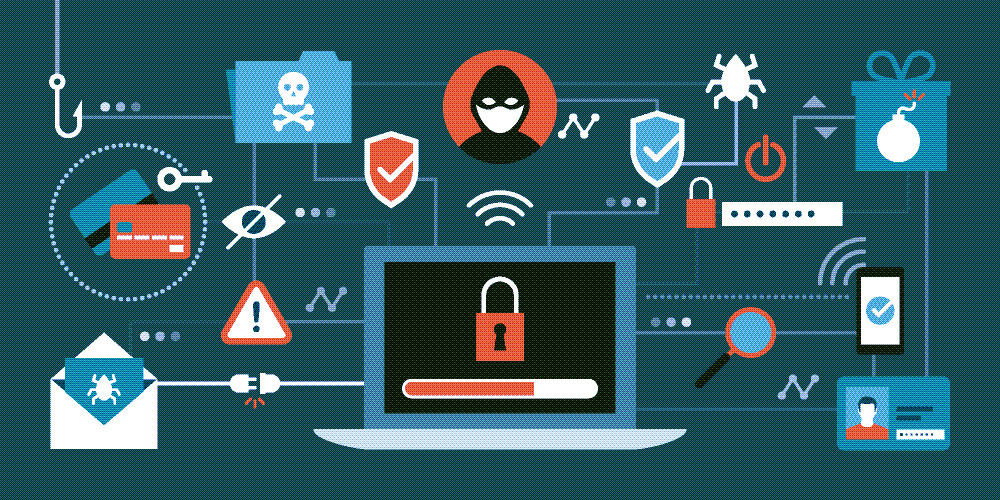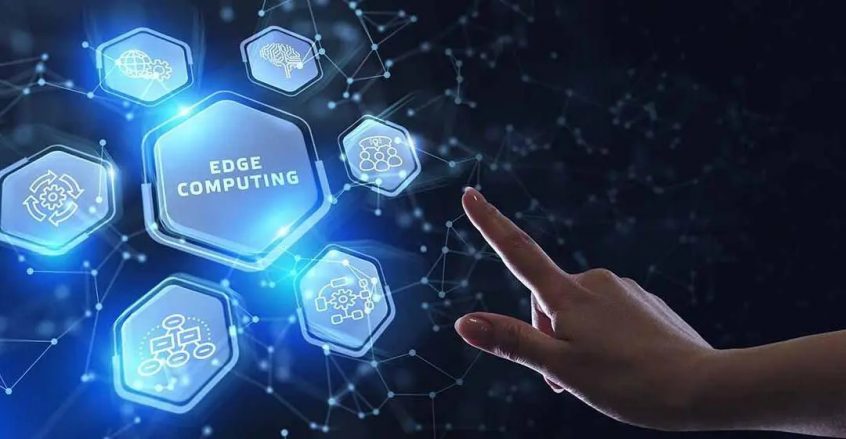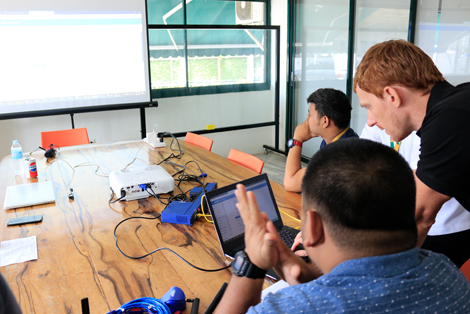The Internet of Things (IoT) has changed the landscape of network architecture. The traditional cloud-based system is now evolving towards localized small data centers, providing lower latency and fewer bottlenecks in the network. These are known as Edge Data Centers. With relative flexibility and adaptive features, edge computing streamlines how data is processed and relayed.
What Is Edge Computing?

Photo Credit: www.singularityweblog.com
Edge computing is derived from the IoT system infrastructure. Because IoT gathers, stores and processes huge amounts data each day, optimizing the networks for this has hastened. Edge computing enhances the data processing of IoT devices, because the IoT system does not facilitate data through a central server, edge computing enables better flexibility in that aspect.
On the other hand, traditional cloud computing networks depend on a centralized system. When data is gathered, it needs to be relayed back to the main servers for processing. This is because there is no uniform computational power and storage for devices in the system. Devices that far have lower capacities raising risks in terms of their functionality.
To provide for a more streamlined data processing, technologies have adapted to simpler and brief processes. This has paved the way for IoT devices to change the course of the network architecture landscape.
What Are The Benefits Of Edge Computing?
At the core of edge computing is lessening the processing function of the system. As such valuable benefits are realized beyond its initial flexibility premise.
- Speed
Fast data is of the topmost value to any data center. With the instantaneous flow of business operations, the vital component to address the situation is speed. Any lag time incurred will mean a loss of income in the process.
Data is a driving force to many businesses. Beyond that, data computing is also a positive attribute. Financial services organizations are one of the many businesses that need data speed. A fraction of seconds is an operations trade for them.
This is where edge computing pioneers network performance enhancement. It reduces the period of data processing. Because of IoT platforms, data relay travels at a closer distance. Edge computing devices rely on local processing or closer data centers. As such, data will travel faster.
One area of concern in data processing is digital traffic jams. As data processing speed becomes a norm, more and more businesses are integrating it into their operations. More and more data will be transmitted using fiber-optic technologies. Despite its capacity to allow faster data travel, it is inevitable for digital traffic to occur.
There are also bottlenecks in the data relay. Because data has to travel longer spans, last-mile routing becomes a problem. The problem lies in routing data through local network connections. These connections cannot relay it at faster speeds. The issue of latency will hamper data relay ultimately.
With closer sources, data processing will not be limited by latency. The physical distance is variable in ensuring data processing is sped up. With lesser travel time, higher speeds are enjoyed by end-users.
- Security

Photo Credit: br.mouser.com
One may be apprehensive in integrating edge computing devices into their data centers. While the apprehension is valid as it gives wider attack points in the network, edge computing is still ahead in network security compared to traditional cloud systems.
The main vulnerability of cloud computing is its centralized architecture. This is especially prone to distributed denial of service (DDoS) attacks. A centralized system is also a disadvantage in power outages. Edge computing devices negates the point of attack because they don’t have one central server for data processing.
It will be difficult for security attacks to breach an edge computing system. Because data process activities are distributed to an array of devices, any disruption will not damage the system. However, edge computing has a downside in cyberattacks. Any weak point in the system can be an entry to malware intrusions.
Despite these valid concerns, security protocols are easily laid out in IoT edge devices. It is also a relative advantage that security protocols are not affecting the entire system. Security options can seal off attack entry points without shutting down the system. Another advantage is the data processing nature of edge computing devices. Since data processing is done on local devices, it reduces any data threats. Compared to traditional data relay of re-routing data to a central server, data becomes vulnerable to theft and tampering. This can disintegrate data integrity.
There are arguments that edge computing system also has edge data centers. These are additional data processing points. In this matter, it opens up chances of security attacks. It is the opposite. Specialized edge data centers have primarily had complex security measures that can counter most cyber threats. It ensures and secures the network as a whole.
- Scalability
IT infrastructures are meant to keep pace when businesses grow. However, data centers are also a hefty investment. Traditional IT facilities are limited in terms of growth. This can negate any chance of upgrading and potential upscale.
Scaling operations is a welcome potential in cloud-based technology and edge computing. Packaging is made to provide a comprehensive data processing capability for IT equipment. With more and more computing features, operational scale is achieved.
Data centers are no longer a requirement when expanding data operations. Because centralization is no longer a consideration, expensive physical facilities are no longer the norm. The inexpensive route is to invest in edge computing IT infrastructure that will expand the capacity of data operations. It also hastens add-on technology solutions. Incorporating upgrade infrastructure into the system is easier because compatibility is not an issue.
- Versatility
Incorporating edge computing with local edge data centers will narrow down target markets. As such, infrastructure need not be physical. Edge computing adapts to the situation on the ground.
The capacity to provide data processing with a closer physical distance negates any possibility of latency. The rise of content providers has been a steady target market with maximum growth potential. Enabling service to these end-users without the need to physically start up a facility puts into play the expandability of edge computing.
There are actionable data for processes that come in at high density. In this regard, IoT devices through edge computing can address data processing without security approval from a central server. Edge computing devices ensure that connections are not barred and data analysis will be instantaneous.
There is also unstructured information that needs processing. In partnering with local edge data centers, the processing is done locally. Because of this, turnaround time is faster. Quick delivery service now becomes a regular way to go. Machine learning programs hastens their function to analyze data points.
The versatility of edge network architecture, not only enhances quick turnarounds. It also upholds quality with better services to end-users. The possibilities are endless for IoT devices that are purposely intended for a specific function. The value addition is significant.
- Reliability

Photo Credit: www.techrepublic.com
With better security assurance, edge computing strengthens the reliability of data processing. When data centers are closer to end-users, it assures better network streams that limit any disruption. Vital processing functions will also continue to operate even in device downtimes. Because an IoT edge device operates individually but projects capacity to the whole system.
Because of data traffic, data flow is a valuable consideration. Any chance of disruption in the relay will lead to critical issues on data integrity and operational latency. A data processing device that is close to the source can address this concern. Edge systems have a closer distribution capacity because of reduced travel time. Because of this, the seamless relay is realized.
The service interruption is also a cause of concern. But because edge computing devices have the flexibility to work around power outages and any other external interruption, a complete shutdown is not possible. There are means to reroute data for intended recipients. Several pathways guide the transmission of information to ensure that data reaches them. The peerless reliability of edge computing devices incorporated with edge data centers will provide a comprehensive data operation.
Challenges Of Adopting Edge
The majority of IoT projects fail to make it past the proof-of-concept stage due to a variety of issues. These issues can be divided into four categories: standards, infrastructure, security, and frameworks.
- Security Concerns Specific To The Edge Are Still Poorly Understood
The majority of edge devices are small, low-cost, and not designed with security in mind. Edge devices are frequently the weakest link in a cyberattack. Many don’t encrypt data natively to save money and speed up deployment. The bulk of these gadgets doesn’t require third-party API authentication.
- New Surroundings Necessitate New Management Rules
Another problem for edge computing and IoT network architecture, according to the majority of IT managers, is the lack of consistent norms and regulations for device management. Many IT managers are still striving to grasp the local implications of these policies in their own firms, as the US and UK governments have adopted IoT guidelines and legislation in recent years.
A major impediment to the adoption of IoT networks is the lack of a single, centralized OS for IoT networks. Processes cannot be assured in the absence of consistent, and reliable security and upgrades. Organizations that are ready to deploy more data and application assets to edge computing environments are delaying their decisions.
End-user decision-making is frequently complicated and hampered by the differences in structure and method given by both types of actors. Another fundamental difficulty is the ambiguity about how the transition to distributed networks will be implemented. Both corporations and service providers are attempting to position themselves to profit from the edge.
- Integration In A Multi-Cloud Environment
Establishing a redundant edge network to manage incoming data traffic will be a challenge for the cloud. The majority of IT managers are still having difficulty finding flexible solutions and vendors that can handle the high bandwidth requirements.
- Heavy Initial Capital Investment
R&D in edge-enabled software frameworks and hardware devices must be assisted by substantial capital investment. The initial capital required for availing the necessary infrastructure, as well as expertise, is even higher in emerging economies due to weak connectivity and network provisions. Investment in edge often finds itself competing with other investment priorities in enterprises.
Maximizing Edge Computing Through AKCP Solutions
Specific operational strategies are the main reference in integrating edge computing. Beyond all that, better operations are the basic objective of many. Because of this, there are solution challenges that should be addressed in line with edge computing plans.
- IT Evaluation
- Datacenter Location
- Monitoring System
These are some of the variables to ensure a comprehensive edge computing operation. AKCP wireless technologies are a few of the technologies that can complement edge computing. AKCP wireless sensor technology has a high-penetration, wireless sensor communication that is facilitated through IoT devices.
AKCP base units such as sensorProbeX+ and securityProbe can connect with the AKCPro server. Local data centers can communicate through base units on cross-platform access. Integrated monitoring of the device is centralized in the AKCPro Server that integrates all possible IT monitoring functions such as:
- Environmental Monitoring
- Security Monitoring
- Power Monitoring
- Access Control
- Video Monitoring
As the world leader in SNMP-based data center monitoring solutions, protecting your data center will be secured further. Ultimately, your edge computing capabilities are maximized at optimum performance.
Reference Links:
https://telecoms.com/opinion/edge-computing-and-5g-power-telco-and-cloud-convergence/
https://searchdatacenter.techtarget.com/definition/edge-computing
https://towardsdatascience.com/should-we-abandon-cloud-computing-and-embrace-edge-computing-971228e3dae4





